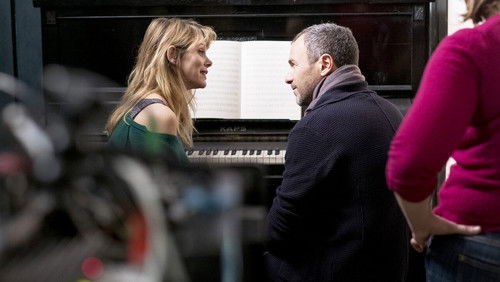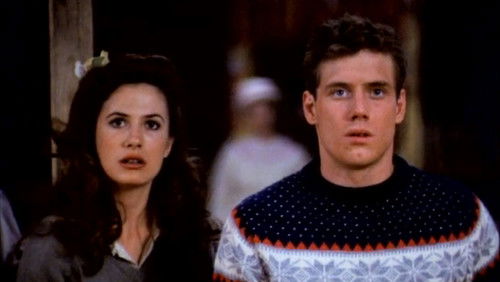Kennwort 'Schweres Wasser' (1965)
57KKennwort ‘Schweres Wasser’: Directed by Anthony Mann. With Kirk Douglas, Richard Harris, Ulla Jacobsson, Michael Redgrave. Norwegian resistance tries to stop German efforts to produce an atomic bomb component during World War II.
“Throughout the 1960s, Hollywood invented what we now call u0026#39;infiltration commando filmsu0026#39;, a truly interesting sub-genre within war films, far from the brutal realism that would be introduced years later, but with enough adventure and romanticism to be regarded as a great spectacle. Until then, war films were characterized by a minimalist way of developing the theme, showing the audience small brush strokes of war. Although there were war scenes, directors focused more on directing the actors than on special effects and creating a spectacular story. Great films such as u0026#39;Objective, Burma!u0026#39; (1945), u0026#39;Destination Tokyou0026#39; (1943) and u0026#39;The Bridge on the River Kwaiu0026#39; (1957) included no important action scenes. They started to appear later on thanks to the demythologization of war, and the will to recover a genre that had been more or less forgotten. u0026#39;The Guns of Navaroneu0026#39; (1961), u0026#39;The Dirty Dozenu0026#39; (1967) and u0026#39;Where Eagles Dareu0026#39; (1968) are good examples of this commando sub-genre. They were keen to show a more feasible type of war, slightly unreal and u0026#39;festiveu0026#39;, but without losing their ensemble film quality.u003cbr/u003eu003cbr/u003eTogether with the three mentioned above, one of the most popular films is u0026#39;The Heroes of Telemarku0026#39;, directed by the brilliant Anthony Mann, a great director of western and ensemble films, who lived in Europe back then and worked in Samuel Bronstonu0026#39;s blockbusters. Using his savor-fare in u0026#39;The Heroes of Telemarku0026#39; he adapted a true story that took place during Germanyu0026#39;s invasion of Norway. He worked together with screenwriters Ivan Moffat, Knut Haukelid and Ben Barzman (with the support of novelist John Drummond) and the magnetism of Kirk Douglas, Richard Harris, Ulla Jacobsson and Sir Michael Redgrave. We must not forget the excellent photography of Robert Krasker, which transports us to Telemark (Norway) in the comfort of our seats, and also the elegant score by Malcolm Arnold (who also composed the music for u0026#39;The Bridge on the River Kwaiu0026#39;). Curiously enough, Kirk Douglas worked with Anthony Mann again when he started to direct u0026#39;Spartacusu0026#39; (1960), before he was replaced by Stanley Kubrick.u003cbr/u003eu003cbr/u003eThe film is set in the region of Telemark (Norway) in 1942, when the allies found a document that irrefutably proved that German scientists were making progress in the search for atomic fission at the Vemork heavy water plant, situated next to the small town of Rjukan, and were in the middle of making an atomic bomb that would change the course of the war. u0026#39;Heavy wateru0026#39; is a chemical compound with a molecular formula equivalent to water, in which hydrogen atoms are replaced with deuterium, a heavy hydrogen isotope.u003cbr/u003eu003cbr/u003eBack then, Norway had built up its own resistance, made up of civilians and former soldiers. One of the members, Knut Haukelid (1911-1994), twin brother of actress Sigrid Gurie, became a national hero after being part of the real commando that appears in the film. The Norwegian resistance and the British army work against the clock to prevent Hitler from achieving his long-awaited bomb: Together they draw up an ambitious plan to destroy the Vemork factory. Once they rule out the possibility of bombarding, Operation Freshman is launched – British paratroopers are deployed over Telemark and are supposed to join the resistance, led by the Norwegian soldier Knut Straud (Richard Harris), who does not hesitate to seek the help of physicist Rolf Pedersen (Kirk Douglas). To make it all even more dramatic, Pedersen discovers that his ex-wife (Ulla Jacobsson) and uncle (Sir Michael Redgrave) have joined the resistance. This is dangerous for him personally because oneu0026#39;s feelings can often cloud oneu0026#39;s reasoning in times of war. The human reactions that take place in the film help to establish a stronger connection between the audience and the protagonists.u003cbr/u003eu003cbr/u003eOperation Freshman proves to be unsuccessful because the Horsa Glidier gliders crash and part of the crew die in the accident, and the rest are shot by the enemy. A great part of the true story emerges in the film, although the name of Major Knut Haukelid is changed to Knut Straud (Richard Harris), in order to allow certain liberties in the development of the film. After the first mission fails, the Norwegian commando that is waiting, made up of 15 volunteers (in the film there are only 9), launches Operation Gunnerside. They enter the factory and destroy the tanks where the u0026#39;heavy wateru0026#39; is stored. The facility remains inactive for two months but the Germans manage to rebuild the tanks and increase production. The saboteurs ski all the way to Sweden to avoid being captured by the Germans, while the Norwegian and British soldiers continue to rack their brains to find a way to stop the production of u0026#39;heavy wateru0026#39;. These events pick up speed in the film and shortly after the first attempt to sabotage the factory, Kirk Douglas and Richard Harris (after a thrilling persecution on skis) come into action again and plan to blow up the factory which is about to transport the u0026#39;heavy wateru0026#39;, even if they have to risk their lives and those of their loved ones to complete the mission.u003cbr/u003eu003cbr/u003eFor just over two hours, and thanks to the rhythm and elegance that Anthony Mann stamps in every shot, the audience will travel alongside the protagonists, in their adventures and mishaps, and will discover a truly interesting series of historical events. The filming locations were Vemork, Rjukan, Tinnsjo and Gausta, in the region of Telemark, in Norway, and also Oslo, because Anthony Mann wanted to make the most of the beautiful landscape. While he was there, he shot magnificent skiing scenes, in the manner of the best German Bergfilms. We must not forget that the region of Telemark is the cradle of skiing, as it is known today.”









